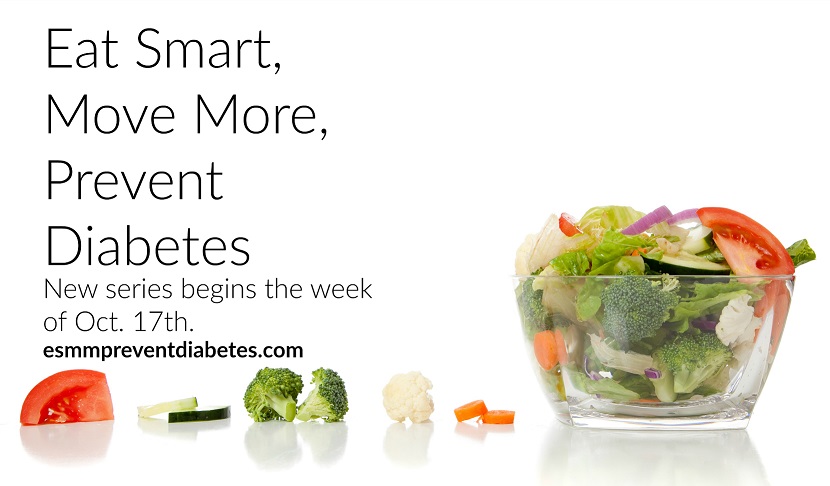Like so many when getting older, health awareness and prevention become more important. A major genetic prevalence for me is type 2 diabetes, which puts me at an increased risk of developing the disease as well. Type 2 diabetes is preventable and there are ways to reduce risks for possible development or delayed development. To reduce my risks, I’ve decided to take full control of my lifestyle and behaviors that put me at high risk for type 2 diabetes. Making small changes now can ultimately mean preventing later development. The Eat Smart, Move More, Prevent Diabetes program is helping me learn these small step changes.
Making small changes now can ultimately mean preventing later development. The Eat Smart, Move More, Prevent Diabetes program is helping me learn these small step changes.
First, I learned exactly what my blood levels, body weight, BMI, and blood pressure values were after going to my doctor. The results showed that my body weight and blood pressure were slightly higher in comparison to normal values for my age. The good news was that these risks are modifiable and that by making simple changes my chances for developing diabetes are greatly reduced.
Next, I had to determine modifications that should be made to help me in my journey to prevent diabetes. I carefully examined my diet, activity, and overall lifestyle. Although lifestyle changes are mostly considered difficult, these sacrifices are all well worth it!! I believe strongly in my plan and have decided to execute it without excuses. Ultimately, my plan is to take control. This will enhance my overall quality of life now and possibly prevent the development of type 2 diabetes.
- Early food preparation for all meals
- Make time to exercise (at least 30 min)
- Eat healthy meals and snacks
- Limit intake of salts, fats, and refined grains (white flour)
- Eliminating stressors
Will you join me in this journey? Are you in the process of making small lifestyle changes? Share in the comments section below what you are finding to work well and what your goals are. We also have a private Facebook community to continue to share ideas with each other. The more support, the better!

 was usually telling me to. While I voluntarily joined the cross country team in high school, you would be hard pressed to find me completing the summer training runs or weekend long runs required by our coach. Later in life I tried everything to maintain my motivation to run. I followed strict training plans, I started working at a running store, and even started coaching a youth running group. I paid for races to jumpstart my motivation, but eventually even shelling out $75 for a race was not enough to pressure me into exercising regularly. My well of joy for running had totally dried up.
was usually telling me to. While I voluntarily joined the cross country team in high school, you would be hard pressed to find me completing the summer training runs or weekend long runs required by our coach. Later in life I tried everything to maintain my motivation to run. I followed strict training plans, I started working at a running store, and even started coaching a youth running group. I paid for races to jumpstart my motivation, but eventually even shelling out $75 for a race was not enough to pressure me into exercising regularly. My well of joy for running had totally dried up.


 drink enough water leading to
drink enough water leading to 
 These stresses range from our daily work to financial situations and can often haunt us while trying to rest at night. More and more each year, Americans are becoming sleep deprived, and the effects are much greater than a yawn throughout the day.
These stresses range from our daily work to financial situations and can often haunt us while trying to rest at night. More and more each year, Americans are becoming sleep deprived, and the effects are much greater than a yawn throughout the day.


